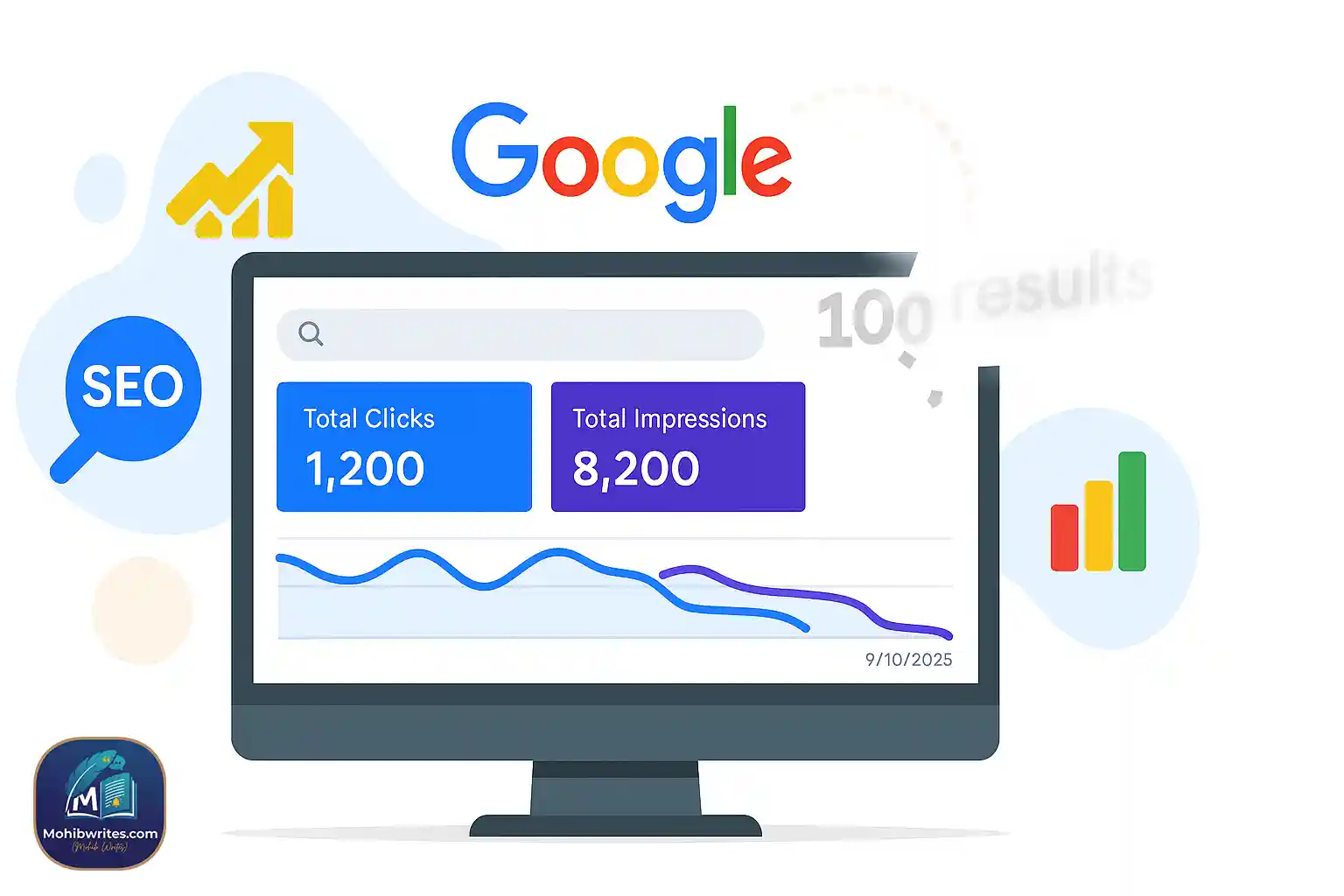Google has quietly disabled the &num=100 parameter in search results, a move that’s already disrupting popular rank trackers and shaking up Google Search Console SEO reporting.
If you’ve noticed sudden drops in desktop impressions since September 10, 2025, you’re not alone—many SEO teams are scrambling to understand what this means for search engine marketing and long-term reporting accuracy.
What Changed in Google Search Results
For years, SEOs used the &num=100 URL parameter to load 100 results per search page instead of the standard 10.
This shortcut helped tools like on-page SEO tools and rank trackers check positions faster and cheaper.
As of mid-September 2025:
Forcing 100 results no longer works in most cases.
Tools now need 10 separate requests to Google for the same data.
Some rank trackers report errors, missing positions, or strange gaps.
Google hasn’t officially commented, but the timing lines up with noticeable desktop impression drops in Google Search Console.
Why This Matters for SEO
1. Rank-Tracking Costs Spike
Tools now have to send more requests, raising bandwidth costs.
Platforms like Keyword Insights have already flagged this issue for users.
2. Search Console Data Shifts
Many marketers saw inflated impressions in 2024–early 2025.
Experts like Brodie Clark suggest bots loading 100-result pages may have been the cause.
With &num=100 gone, impressions now look “lower” but more realistic.
3. The “Great Decoupling” Theory Revisited
For months, SEOs blamed AI Overviews for rising impressions without clicks.
This update shows search engine bots and scraping activity may have inflated the numbers instead.
Industry Reactions
Keyword Insights (Sept. 14, 2025): “Google has killed the n=100 SERP parameter… This impacts our rankings module. We’re reviewing options.”
Ryan Jones (LinkedIn): “All the AI tools scraping Google are pushing Google to fight back, breaking SEO rank checkers and scrapers.”
Brodie Clark (X): Reports show sharp drops in impressions and jumps in average position across multiple accounts since Sept. 10.
What SEO Teams Should Do Now
1. Re-Benchmark Search Console
Treat post-Sept. 10 impressions as your new baseline.
Spikes from earlier months may not reflect real user behavior.
2. Talk to Your Tool Provider
Ask if your rank tracker has adapted.
Some tools are testing pagination and alternative methods to maintain accuracy.
3. Focus on Search Intent, Not Just Ranking
With Google tightening data access, invest in strategies that improve click-through rate (CTR) and user engagement instead of obsessing over raw position numbers.
4. Monitor Google Updates
Since Google hasn’t confirmed if this is permanent, stay flexible.
The company has also posted job openings for Anti-Scraping Engineering Analysts, signaling a wider crackdown on aggressive data scraping.
Looking Ahead
Whether this is a test or a permanent shift, the removal of &num=100 is a wake-up call for SEO teams relying too heavily on scraped SERP data.
Expect tool vendors to adapt, but also expect search engine marketing to move further toward first-party data, Search Console insights, and intent-driven optimization.
FAQs (People Also Ask)
What is the &num=100 parameter in Google search?
It was a URL setting that displayed 100 results per page instead of the usual 10.
SEO tools used it to track rankings more efficiently.
Why did my Google Search Console impressions drop in September 2025?
The drop aligns with Google removing &num=100.
Earlier spikes were likely inflated by bots loading 100-result pages.
Does this affect on-page SEO tools?
Yes. Tools that rely on bulk SERP scraping may show gaps or errors until they adapt.
How can I check keyword rankings now?
Use trusted rank-tracking platforms that have updated methods or run a Google keyword ranking check manually (though less scalable).
Is this linked to AI Overviews?
Partly. While AI Overviews do impact impressions, this update shows inflated data also came from bots scraping extended SERP pages.
Will Google restore the &num=100 feature?
There’s no confirmation.
Most signs suggest this is a permanent anti-scraping move.
Google’s decision to disable the &num=100 parameter is more than a technical tweak—it’s a fundamental shift for how SEO tools, rank trackers, and Google Search Console SEO reporting work.
Marketers should recalibrate their reporting, focus on authentic search results, and be ready for further anti-scraping updates.
Audit your Search Console Google data today, compare pre- and post-Sept. 10 trends, and update your reporting models to reflect the new normal.








I have read some excellent stuff here Definitely value bookmarking for revisiting I wonder how much effort you put to make the sort of excellent informative website